|
Thursday, Oct. 4
- Breakfast: Greek omelet
- Green pork chili
- Barbecue chopped-pork sandwich
- Southern fried chicken
- Smart cuisine: baked Swiss steak
- Italian loaf
- Chef Juan pizza
- Tex-Mex grilled-chicken salad
Wilson Hall Cafe Menu |
|
Friday, Oct. 5
Dinner
- Vol-au-vents with mushroom duxuelle
- Grilled duck breast with lingonberry sauce
- Wild rice
- Brussels sprouts with bacon and lemon
- Profiteroles with brandied pears and chocolate sauce
Wednesday, Oct. 10
Lunch
- Baked cornish hens with mustard sauce
- Broccoli and rice
- Pumpkin pie with spiced cream
Chez Leon Menu
Call x3524 to make your reservation.
|
|
Construction begins on largest liquid-argon time projection chamber in the U.S.
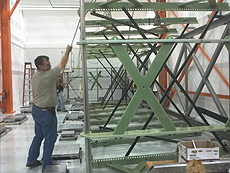 |
John Voirin, PPD, works on the construction of the liquid-argon time projection chamber. Photo: Jennifer Raaf, PPD
|
If everything goes according to plan, in 2014 Fermilab will fire up the largest liquid-argon time projection chamber to be built in the United States. The device will be the heart of the laboratory's MicroBooNE experiment, which physicists hope will confirm whether there are just the three known types of neutrino oscillations or if more exist – a possibility that's been badgering scientists for nearly two decades.
Until recently, the LArTPC was merely drawings on paper and some stacked and stored metal slabs. However, Fermilab now has all the parts necessary to build the chamber's body. MicroBooNE collaborators and Fermilab technicians began construction earlier this month.
"When the LArTPC is finished, it will be about the size of a school bus and weigh around 5 tons," said one of MicroBooNE's construction managers, Jennifer Raaf.
In general, when it comes to TPCs, bigger is better. The larger the chamber, the more material scientists can stuff inside it, which in turn means more particle collisions and better statistics. In the LArTPC's case, the material will be roughly 170 tons of extremely pure liquid argon – a substance that will allow scientists to detect what kind of particles are born from collisions between neutrinos, protons and neutrons.
In addition to its importance for MicroBooNE, demonstrating the LArTPC technology is important for the proposed LBNE experiment, which would use a similar device to detect neutrinos.
In spring of 2013, the MicroBooNE collaboration will have finished building the LArTPC and will move it from its current location, the DZero assembly building, to its permanent home at the eventual Liquid Argon Test Facility.
Once the LArTPC is installed, physicists will use the Booster neutrino beam to shoot muon neutrinos at the TPC's center. They will then study the resulting outburst of particles, with hopes of detecting a certain excess of low-energy, electron-like events, like the one that was first observed in MicroBooNE's cousin experiment, MiniBooNE, back in 2007.
This excess could be evidence for an exotic fourth type of neutrino or it could be the result of background contamination. The LArTPC will distinguish between the two.
Read more
—Jessica Orwig
|
Election season
Editor's note: Because it is election season, we are rerunning this column on policies on Fermilab employees' political activities. The article originally appeared in the Oct. 27, 2010 issue of Fermilab Today.
Gary Leonard, Fermilab general counsel, wrote this column.
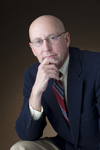 |
|
Gary Leonard |
Election season is upon us. We are inundated by the press and with roadside signs and television spots proclaiming the virtues and vices of various candidates. I encourage all of you, as responsible citizens, to participate in our electoral process. Fermilab even has a time-off voting policy to allow you to make time to participate.
Fermilab employees are also free outside of work to support their favorite candidates and issues in any way they choose. However, please remember that it is illegal to use any Fermilab resources to do so.
Federal legislation, referred to as the Hatch Act, regulates or restricts political activities by federal employees as well as the use of federal property for political purposes. Importantly, while Fermilab employees work for FRA, not the federal government, the property we use is federally owned and the law prohibits the use of any federal property, including buildings, facilities or grounds for political purposes. Department of Energy buildings and property, including any on the Fermilab site, may not be used for campaign activities such as town hall meetings, rallies, speeches, fundraisers, press conferences or photo opportunities. This is true even if a facility has a policy to permit use of some portion of the facilities by the public.
The law also extends to property that has been assigned to you, such as computers, telephones, copiers and even Fermilab's computing networks. So while Fermilab policy allows incidental personal use of such property, that incidental use would not include the use of such property for political activities. In fact, Fermilab has a policy that governs the use of any laboratory resources for political activities.
We do have political figures on our campus from time to time. Senators and representatives and their staff members come to tour the site and learn about what we're working on. These are perfectly legitimate activities, although they need to be carefully handled to ensure they cannot be interpreted as or evolve into political events. There is a clear line boundary that must you must not step over.
If you have any questions, please consult with Gary Leonard, Fermilab's legal counsel.
|
The cosmological supercomputer
From IEEE Spectrum, Oct. 1, 2012
When it comes to reconstructing the past, you might think that astrophysicists have it easy. After all, the sky is awash with evidence. For most of the universe's history, space has been largely transparent, so much so that light emitted by distant galaxies can travel for billions of years before finally reaching Earth. It might seem that all researchers have to do to find out what the universe looked like, say, 10 billion years ago is to build a telescope sensitive enough to pick up that ancient light.
Read more |
|
A new chapter in the story of B decays
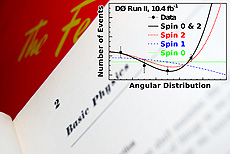 |
| Observing something may begin a story, but the subsequent study fills in the rest of the book. |
The observation of a new particle or a new decay mode is not the end of a story, but the beginning of one. New chapters must follow as the properties of the phenomenon are studied and their measurements refined.
Earlier this year, the LHCb collaboration opened the book on a new decay mode for the neutral Bs meson, a pairing of a bottom quark and a strange quark. Sometimes, the final decay products include two charged K mesons, particles containing an up and a strange quark. The newly observed decay mode arises when the K+ and K- mesons are being produced by a more massive intermediate state than usual. A recent analysis at DZero verifies this observation and provides the next chapter in the story of this decay mode.
The decays of neutral B mesons are interesting because they allow for direct tests of matter-antimatter asymmetry. By independently verifying this decay mode, DZero has confirmed that there is an additional means to test for differences in the behavior of matter and antimatter. The K+ and K- can also be used to directly study the massive intermediate state that produced them. The DZero analysis measured the neutral Bs meson's decay rate into this intermediate particle. Analyzers also studied the spin of the intermediate particle, verifying that the particle is consistent with being a spin-2 particle, as suggested by the initial observation, and further ruling out the spin-0 and spin-1 states.
By not simply confirming the initial observation but performing complementary measurements and constraining the properties of the intermediate particle, DZero has contributed an exciting chapter to the ongoing story of this newly observed decay mode.
—Mike Cooke
 |
| These physicists made major contributions to this analysis.
|
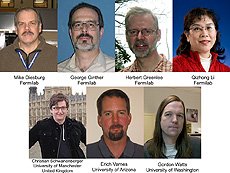 |
| What if five or 10 years in the future, a similar observation is made that the Tevatron data should be able to confirm? The DZero data preservation task force recently issued a report describing the steps that need to be taken to ensure that such analyses can be performed in the future.
|
|
The Standard Model
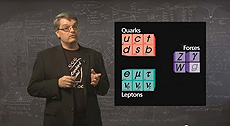 |
Fermilab scientist Don Lincoln describes the Standard Model of particle physics, covering both the particles that make up the subatomic realm and the forces that govern them. Video: Fermilab |
|
HEP open access initiative at crucial juncture
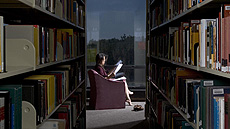 |
| A meeting at CERN launches the next phase of SCOAP3, an initiative to give the public free access to the scientific literature on particle physics. Photo: Fermilab |
Representatives from two dozen nations met [on Oct. 1] at CERN, the European particle physics laboratory, to officially launch the next phase of the SCOAP3 project, which aims to make all published literature in the field of high-energy physics available to readers for free.
As reported last week in Nature News, the SCOAP3 consortium has released information on bids from the publishers of 12 scientific journals. The journals range from the American Physical Society's Physical Review D, which published nearly 3000 HEP papers last year, to Chinese Physics C, with just 16 papers. Between them, these journals publish 90 percent of the papers in the field.
Read more
—Glennda Chui
|
|